Headlines and events archive
Displaying 501 - 550 of 1931
You may also find an archive of news published in the media which are related with the Instituto de Astrofísica de Andalucía - CSIC.
Pages
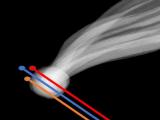
|
02/12/2019 - 03/12/2019
Comet Interceptor Full Team Meeting Granada |
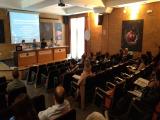
|
04/11/2019 - 08/11/2019
1st IAA-CSIC Severo Ochoa School on Statistics, Data Mining and Machine Learning Granada |

|
23/04/2019 - 23/04/2019
Seminar on Preparation of Proposals to the European Research Council (ERC) Granada |
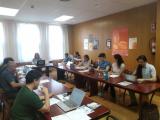
|
13/06/2019 - 13/06/2019
Key Aspects in the Preparation of a Competitive Proposal MSCA-IF Granada |
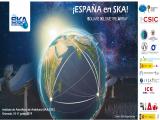
|
10/06/2019 - 11/06/2019
¡España en SKA! Granada |

|
05/11/2020 - 12:30
SO Web-Coloquia: The Arecibo Observatory Roadmap for the Future: science enhancement plans under UCF management The Arecibo Observatory (AO) has supported cutting-edge research in the fields of Astronomy, Planetary Science, and Space Atmospheric Science for decades. The unprecedented sensitivity of the Arecibo antenna has led to fundamental contributions in a wide variety of research programs, including the first detection of an exoplanet around pulsar (Wolszczan... Dr. Noemi Pinilla-Alonso |
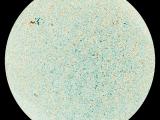
|
16/07/2020
The SO/PHI instrument, on board the Solar Orbiter mission, obtains the first autonomous magnetic map of the Sun The SO/PHI instrument, on board the Solar Orbiter mission, obtains the first autonomous magnetic map of the Sun |

|
16/07/2020
IAA researchers participate in GRANDMA, an international network for the study of gravitational wave sources IAA researchers participate in GRANDMA, an international network for the study of gravitational wave sources |
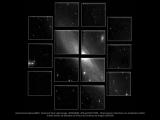
|
16/07/2020
First technical light of the JPCam panoramic camera at the Javalambre Astrophysical Observatory First technical light of the JPCam panoramic camera at the Javalambre Astrophysical Observatory |

|
04/05/2021 - 12:30
SO Web-Colloquia: Thematic area 9 of the CSIC’s new White Book: Understanding the basic components of the Universe, its structure and evolution CSIC is about to publish a White Book to define its scientific strategy for the coming decades. The White Book contains chapters on 14 different thematic areas. One of the main goals of this exercise is to increase collaboration between research groups and institutes of the CSIC. Particular value is set on inter- and cross-disciplinary work. Each thematic area defines a set of “challenges”, key scientific questions for the coming decade(s) in... Dr. María José Costa and Dr. Rainer Schödel |

|
17/09/2020 - 12:30
SO Web-Colloquia: J-PAS: First light results of the JPCam The Javalambre-Physics of the Acclerating Universe Asptrohysical Survey (J-PAS) have just started to scan thousands of square degrees of the northern sky with 56 narrow band filters and the JPCam instrument with the telescope 2.5m of the Javalambre Observatory. Before the JPCam started its operation, we have observed with the pathfinder camera one sq. deg on the AEGIS field (along the extended Groth Strip). This colloquium will present the... Dr. Silvia Bonoli |
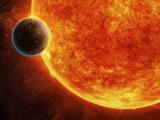
|
25/06/2020
Two super-Earths found around the brightest red dwarf star in our solar neighborhood The Institute of Astrophysics of Andalusia (IAA-CSIC) participates in the discovery of a multiple planetary system around GJ887, a star located 10.7 light years away |

|
15/06/2020
Detection of the green line of oxygen in the atmosphere of Mars NOMAD instrument, aboard the ExoMars (ESA) mission in orbit around Mars, has detected this diurnal emission of atmospheric oxygen for the first time outside Earth. The green line provides information on the composition and dynamics of the atmosphere, and this detection has also allowed to resolve a controversy between atmospheric measurements on land and atomic calculations |
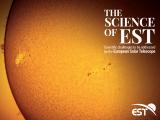
|
15/06/2020
#TheScienceOfEST series is now available as a book! The volume includes 77 short articles on current research topics about the Sun, written in a plain language by scientists from 30 European research institutions and universities. |
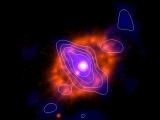
|
10/06/2020
Astronomers discover that novae, a type of explosions in double star systems, expand non-stop The Institute of Astrophysics of Andalusia (IAA-CSIC) participates in the study of the expansion of the shell of material ejected by various nova explosions. They find that, contrary to what was assumed, novae expand unrestrained until their end, when they end up dissipating in the interstellar medium |

|
04/06/2020
First detection in autumn of an elevated stratopause, a winter atmospheric phenomenon Researchers from the Institute of Astrophysics of Andalusia detect, in data files from 2009, an elevated stratopause in November, a phenomenon never seen outside the winter period |
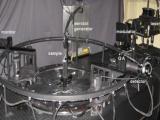
|
22/05/2020
IAA cosmic dust laboratory reinvents itself to study the detection of coronavirus on surfaces The Institute of Astrophysics of Andalusia (IAA-CSIC) is involved in a project financed by the Carlos III Health Institute for the development of a prototype to analyze surfaces contaminated by SARS-CoV-2. The IAA will contribute with polarimetry studies to the project, which already combines image acquisition in the entire optical and sub-millimeter range and its analysis with artificial intelligence |

|
28/05/2020 - 12:30
Galaxy clusters and their environment Clusters of galaxies are located at the intersection of cosmic filaments. I will first describe how we have found large extensions around clusters, at optical and/or X-ray wavelengths, suggesting that we are indeed detecting the cosmic web around clusters, and I will discuss some galaxy properties in one of these extended filaments. At the cluster scale, I will then describe our searches for substructures in X-rays and show how X-ray... Dr. Florence Durret |

|
31/03/2020 - 12:30
HI mapping of nearby dwarf galaxies with SKA pathfinders: unique capabilities of KAT-7 and MeerKAT Dwarf galaxies are by far the most numerous galaxies in the Local Universe. Their simple structure and proximity provides a unique window to the detailed investigation of various processes necessary for galaxy formation and evolution. One of the most reliable approach for studying the evolution of galaxies is to look at their physical properties using the neutral hydrogen gas (HI). In this talk I will present ongoing work on the HI properties... Dr. Brenda Namumba |

|
05/05/2020
The IAA studies the influence of state of alarm on light pollution levels The project, developed by the IAA-CSIC Sky Quality Office and with the support of the Granada City Council, will analyze how current environmental conditions have affected light pollution levels |

|
05/05/2020 - 05/05/2020
Workshop MAAT@GTC Granada -- Virtual Format |
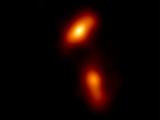
|
07/04/2020
The Event Horizon Telescope reveals unexpected structures in quasar 3C279 About a year ago, the Event Horizon Telescope (EHT) collaboration released the first image of a black hole. They have now looked in detail at the high-speed jet of material emerging from a supermassive black hole |
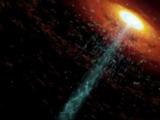
|
07/04/2020
The merger of two galaxies generates the juvenile version of a blazar, one of the most energetic objects known The first unequivocal detection of a jet of material at very high speed emerging from a galaxy in collision with another has been obtained. The jet emerges from the galaxy's central supermassive black hole and is seen head-on, a precursor structure to the formation of a blazar |
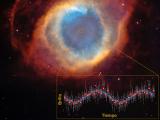
|
27/03/2020
A companion star: possible origin of the complex shapes of planetary nebulae Data from the TESS space telescope show variability in a sample of planetary nebulae, compatible with the presence of a companion star. This binarity could explain the complex morphologies of these objects, which result from the death of low and intermediate mass stars |

|
17/03/2020 - 12:30
Magnetic fields, rotation, and activity in M dwarf stars M dwarfs are known to generate the strongest magnetic fields among main-sequence stars with convective envelopes, but we are still lacking a consistent picture of the link between the magnetic fields and underlying dynamo mechanisms, rotation, and activity. For instance, models predict that the maximum magnetic flux a star can generate scales with convective energy stored in its envelope, but no accurate measurements existed until recently.... Dr. Denis Shulyak |
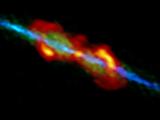
|
10/03/2020
The metamorphosis of a star in the final phases of its life ALMA radiotelescope captured a star in its evolution towards a planetary nebula |
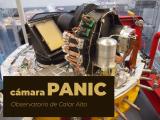
|
09/03/2020
A thesis developed at the IAA is awarded the 2020 MERAC 2020 in new technologies (Instrumental) The optical engineer Concepción Cárdenas Vázquez has been awarded the MERAC Prize for the Best Doctoral Thesis in New Technologies (Instrumental) by the European Astronomical Society (EAS) |
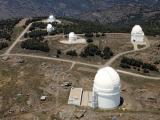
|
06/03/2020
A more sustainable observatory: Calar Alto will be converted into an “energy island” Calar Alto Observatory, scientifically co-managed by the IAA-CSIC, starts its energy transition thanks to a ERDF (European Regional Development Fund)-supported project. Using biomass and solar energy will considerably reduce the ecological footprint of the observatory, as well as the costs associated to its energy needs |
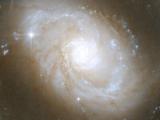
|
04/03/2020
MEGARA instrument enters the heart of the active galaxy NGC 7469 A study led by the IAA-CSIC has revealed the existence of two rotating gas discs in the vicinity of the galaxy's supermassive black hole, as well as a third component that points to turbulent movements |
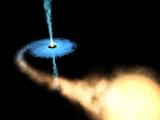
|
02/03/2020
Astronomers get the whole film of how a black hole ejects matter and interacts with the medium The black hole, which forms a binary system with a sun-like star, experienced an ejection of matter that transported gas over huge distances |
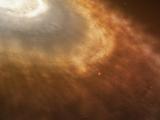
|
25/02/2020
A study reveals what the seeds of the solid bodies of the Solar System looked like: porous dust particles a few millimetres long The IAA is leading an investigation that shows, for the first time experimentally, the features of the particles of a comet's nucleus |
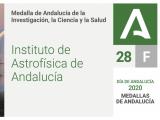
|
24/02/2020
The Institute of Astrophysics of Andalusia, Medal of Andalusia 2020 Awarded by the Junta de Andalucía, the IAA-CSIC obtains the Medal of Research, Science and Health |
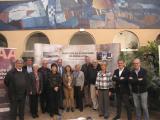
|
24/02/2020
The Institute of Astrophysics of Andalusia receives the visit of its External Scientific Advisory Board Appointed by the presidency of the Higher Council for Scientific Research (CSIC), the Board is made up of ten internationally renowned experts |
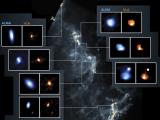
|
18/02/2020
More than three hundred planet-forming disks around young stars found in the Orion Clouds ALMA and VLA radiotelescopes enter the Orion Clouds, a stellar nursery that reveals how newborn stars evolve and develop protoplanetary discs. Researchers from the Institute of Astrophysics of Andalusia (IAA-CSIC) participate in the work, which constitutes the largest survey of this type performed to date |

|
03/09/2020 - 12:30
SO Web-loquio: Active Galactic Nuclei: fueling and feedback Dynamical mechanisms are essential to exchange angular momentum in galaxies, drive the gas to the center, and fuel the central super-massive black holes. While at 100pc scale, the gas is sometimes stalled in nuclear rings, recent observations reaching 10pc scale, or 60mas with ALMA, have revealed, within the sphere of influence of the black hole, smoking gun evidence of fueling. Observations of AGN feedback will be described, together with the... Dr. Françoise Combes |
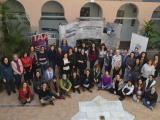
|
10/02/2020
International Day of Women and Girls in Science The Institute of Astrophysics of Andalusia joins the celebration of the International Day of Women and Girls in Science, which seeks to make visible the scientific work of women and promote vocations in girls |
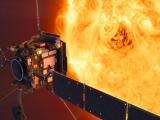
|
06/02/2020
Solar Orbiter mission takes off towards its orbit around the Sun The mission, which will observe the Sun from an unprecedented perspective, will study both solar physics and the influence of the Sun on the interplanetary environment. The Institute de Astrophysics of Andalusia (IAA-CSIC) co-leads SO/PHI, the largest of the ten instruments on board the mission |

|
23/07/2020 - 12:30
X-ray Astronomy for non (X-ray) astronomers Observations of X-rays coming from outside the solar system were pioneered in 1962 by Riccardo Giacconi and colleagues. From that very day, it became evident that X-rays would reveal a very different Universe to that shown by optical or radio telescopes. Indeed, X-rays are typically produced in the environment of black holes, or where the ambient temperature exceeds millions of degrees. X-ray telescopes (which, for good reason, are in orbit)... Dr. Xavier Barcons |

|
25/06/2020 - 12:30
Peering into the Dark: Probing the Formation and Early Evolution of Massive Stars This presentation will focus on recent work aimed at understanding the formation and early evolution of massive protostars. The massive (M>8 Msol) stars into which these evolve are the primary drivers of galactic ecosystems. The energy and nuclear processed material these massive stars inject into their enviroment during their lives and ultimately as supernovae, shapes the physical and chemical evolution of the ISM in galaxies. These stars... Dr. Gary Fuller |

|
14/05/2020 - 12:30
Gamma-ray Emitting Narrow Line Seyfert 1 Galaxies: Past, Present, & Future The detection of significant gamma-ray emission from about a-dozen radio-loud narrow line Seyfert 1 (NLSy1) galaxies by Fermi-Large Area Telescope has opened up a realm to explore the physical conditions needed to launch relativistic jets in a different central engine and host galaxy environment than that is known for more-common jetted active galactic nuclei, i.e. blazars. Promising results acquired from various multi-wavelength campaigns are... Dr. Vaidehi S. Paliya |

|
10/09/2020 - 12:30
SO Web-loquio: Massive black hole binaries in the cosmos Massive black holes weighing from a few thousands to tens of billions of solar masses inhabit the centers of today's galaxies, including our own Milky Way. Massive black holes also shone as quasars in the past, with the earliest detected a mere one billion years after the Big Bang. Along cosmic time, encounters between galaxies hosting massive black holes in their centers have produced binary massive black holes that eventually coalesced by... Dr. Marta Volonteri |

|
18/02/2020 - 12:30
Evolution of statistical techniques in Astronomy The requirement for more robust statistical tools is becoming increasingly higher owing to the demands of various large programmes and the technological advancement producing high-sensitive observations across the electromagnetic spectrum. Among the many existing analyses, the ones working on the time-series as set by the monitoring projects using single-dish/optical telescopes and those of spectral-line observations as rendered by ALMA/IFUs are... Dr. Venkatessh Ramakrishnan |

|
04/06/2020 - 12:30
TuMaG: un magnetógrafo para Sunrise III After the scientific success of the two first flights of the Sunrise stratospheric balloon mission, the international consortium led by MPS (Göttingen, Germany) decided to re-issue the mission for a third time. For Sunrise III, a new gondola and navigation system will be provided by APL (Johns Hopkins University, MD) and the re-furbished telescope by MPS. The latter also provides the instrumental platform and the light distribution system while... Dr. José Carlos del Toro Iniesta |
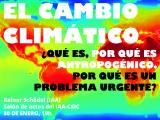
|
30/01/2020 - 19:00
What is climate change, why is it anthropogenic and why is it an urgent problem? What is climate change, why is it anthropogenic and why is it an urgent problem? Rainer Schödel |
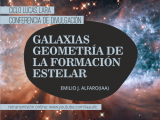
|
19/12/2019 - 19:00
Galaxies. Geometry of star formation Outreach conference Emilio J. Alfaro |

|
28/11/2019 - 19:00
If we cannot save Galapagos, what can we save? Outreach conference Silbia López de Lacalle |

|
18/06/2020 - 12:30
Exploring the origin of gas-rich ultra-diffuse galaxies with HI kinematics Ultra-diffuse galaxies (UDGs) are one of the most discussed topics in extra-Galactic astronomy in the last lustrum given their puzzling properties: they have luminosities typical of dwarf galaxies, but optical scale lengths similar to very massive spirals. This intriguing combination is hard to explain, and up to date the precise formation mechanism of UDGs remains unknown. With the goal of learning more about their origins, our group has... Pavel E. Mancera Piña |

|
20/02/2020 - 12:30
YOUNG RUNAWAY STARS Most stars have spatial velocities within a few km/s of the average velocity of their surroundings and can be considered to be gravitationally trapped. There are, however, a small number of stars that move at velocities of tens or even hundreds of km/s with respect to their environment and that will eventually escape from there. The archetypal runaway stars are mu Col and AE Aur that escaped in opposite directions from the vicinity of the Orion... Dr. Luis Felipe Rodriguez |

|
11/02/2020 - 12:30
Experiments with MUSE data: Finding SN remnants & other curious sources One of the ways of following up on the success story of CALIFA is to refine the spatial resolution, and MUSE is the tool for that. Its superb image quality allows for a different kind of science. While browsing through emission line images derived from MUSE datacubes, we have spotted a number of compact-looking sources with forbidden line emission ([OIII], [NII], [SII]) in excess of that typical of HII regions. NGC 4030, a late type spiral 30... Dr. Roberto Cid Fernandes |
